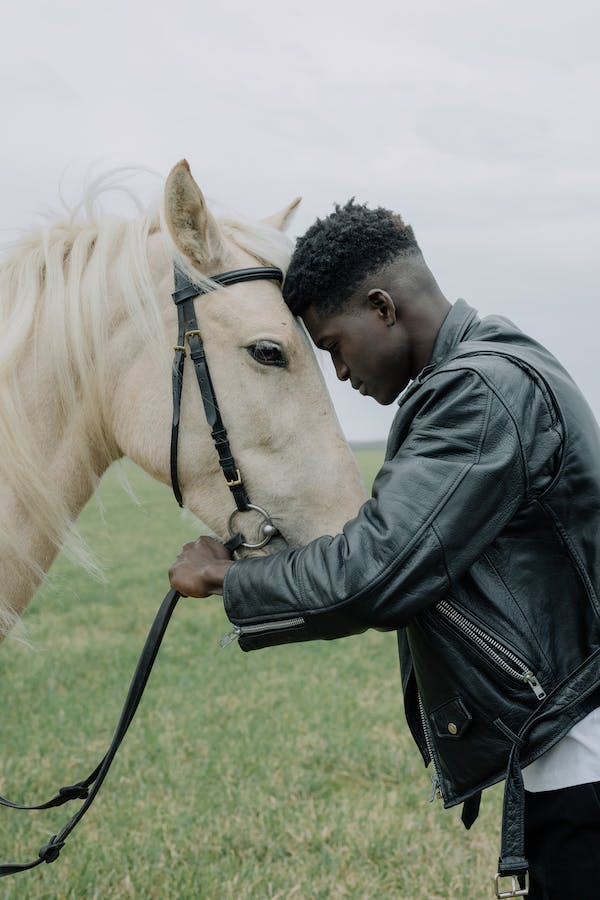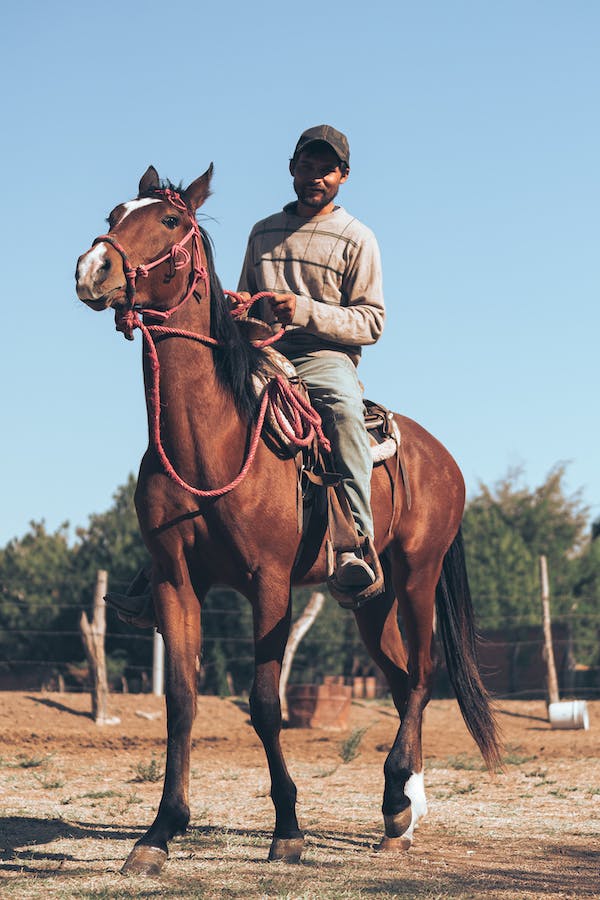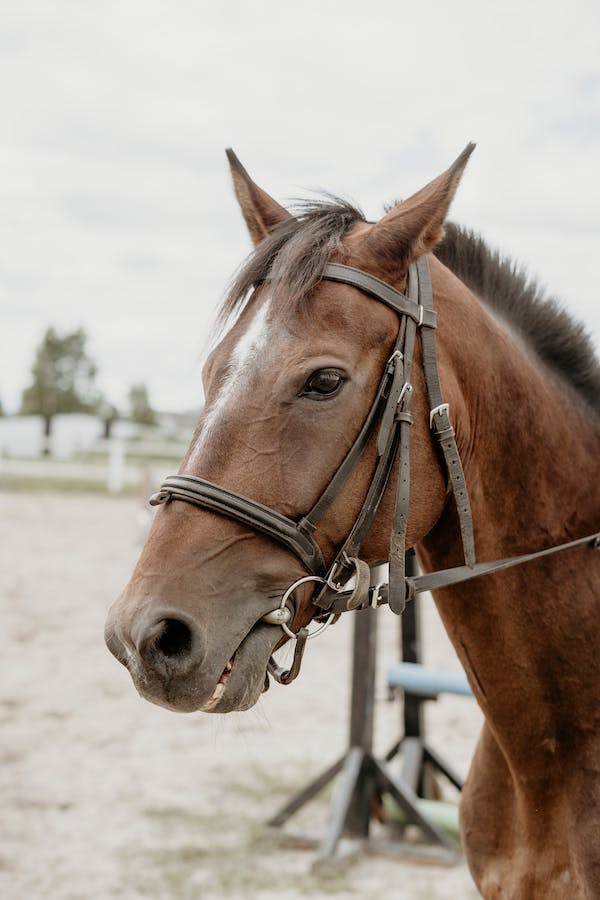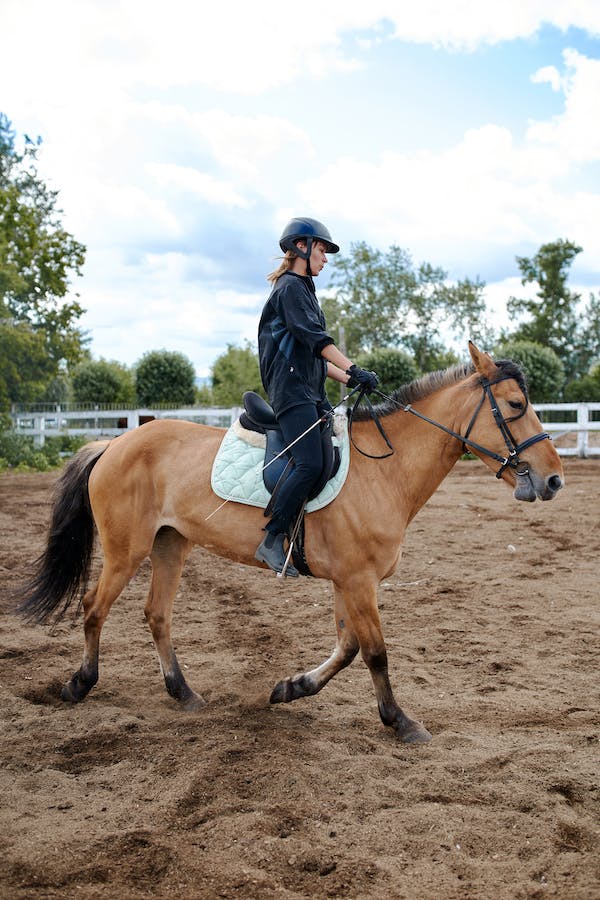
Fitting a bridle on a horse can pose challenges, especially when dealing with resistance or inadequate training.
This blog post will guide you through the proper steps of fitting a bridle, the correct procedure for putting it on a horse, and offer solutions for situations where your horse may resist or prove difficult during the bridle application process.
What are the benefits of using a bridle on a horse?
The benefits of using a bridle on a horse are multifaceted and contribute to the horse’s comfort, communication with the rider, and overall performance.
Here are some key benefits supported by the provided sources:
Facilitates communication
The bridle, in conjunction with the bit and reins, serves as a vital tool for riders to communicate with their horses.
It helps in controlling the horse’s head, directing its movement, and conveying signals from the rider’s hands through the reins into the horse’s mouth.
- Read also: How To Ride A Horse Safely: A Beginners Guide
- Read also: Horse Care Routine-How Much Time Does It Take?
Enhances comfort and wellbeing
Anatomical bridles are designed to promote the horse’s well-being by relieving pressure on the face and allowing for more natural movement.
They can contribute to the horse’s comfort, happiness, and ultimately, its performance.
Improves performance
Scientific research has shown that reducing bridle pressure can lead to improved locomotion and increased joint range of motion in horses.
A well-fitted bridle, including a noseband, provides stability and improves the interface between the bridle and the horse’s head, leading to better performance.
Prevents undesirable behaviors
A bridle can prevent horses from putting their tongues over the bit, which is an undesirable behavior during riding.
It also helps in maintaining stability and control, reducing issues such as tongue lolling and steering problems.
Customized for different needs
There are various types of bridles, such as dressage, snaffle, grackle, and anatomical bridles, each designed to suit specific riding styles and address the unique needs of different horses.
For instance, some horses may be sensitive to having a bit in their mouth, and certain bridles are tailored to accommodate this sensitivity.

What are the different parts of a bridle and their functions?
A bridle is a crucial piece of horse equipment that helps riders communicate with their horses and maintain control over them.
The different parts of a bridle and their functions are as follows:
- Headpiece: Also known as the headstall or crown piece, the headpiece sits on top of the horse’s head behind the ears and, along with the browband, keeps the bridle in place.
- Browband: The browband is a strap that goes over the horse’s forehead, connecting the headpiece to the bit and helping to keep the bridle in place.
- Cheek pieces: These are straps that connect the bit to the headpiece and the crown piece. They aid in maintaining the bridle’s fit and position on the horse’s head.
- Throatlatch: The throatlatch is a strap that goes under the horse’s chin and connects to the headpiece, browband, and bit. It helps to keep the bridle in place and provides additional control over the horse.
- Noseband: The noseband is a strap that goes around the horse’s nose, just below the bit. It helps to keep the bit in place and provides additional control over the horse’s head movement.
- Bit: The bit is a crucial component of the bridle, as it goes into the horse’s mouth and is connected to the reins. The bit allows the rider to communicate with the horse and guide their movements.
- Reins: The reins are connected to the bit rings and loop around the horse’s neck. The rider holds onto the reins to maintain control over the horse.
- Buckles: The buckles are used to adjust the bridle so that it fits the horse’s head properly. They allow for adjustments to ensure the bridle is comfortable and functional.
How do you put a bridle on a horse?
To put a bridle on a horse, follow these steps:
Approach the horse calmly
Start by approaching the horse in a quiet and composed manner.
This helps avoid startling the horse, fostering a sense of trust and cooperation.
Hold the bridle correctly
Proper handling of the bridle is essential.
Grasp the bridle by the crown, positioning your thumb on the inside and your fingers on the outside. This grip allows for better control and ease of placement.
Place the bridle on the horse’s head
Gently position the bridle over the horse’s nose and mouth.
Ensure it is neither too tight nor too loose. Ideally, the bridle should sit just below the horse’s eyes and above the muzzle, providing a comfortable and secure fit.
Adjust the strap
Attach the strap to the bridle and lead the horse by the halter.
It’s important to verify that the strap is not too tight around your hand, allowing for a secure hold without causing discomfort.
Check for fit
Confirm the comfort and security of the bridle by guiding the horse a few steps.
This ensures that the bridle does not cause any discomfort or elicit resistance from the horse.
A well-fitted bridle contributes to a positive experience for both the horse and handler.

How do you correctly fit a bridle?
Achieving the correct fit for a bridle is crucial for the horse’s comfort and effective communication. To ensure the proper fit, adhere to these detailed guidelines:
- Measure the horse’s head: Use a soft tape measure to measure the horse’s head circumference, just behind the ears and level around the eyes.
- Choose the right size: Bridles come in various sizes, so it’s essential to select one that matches the horse’s head measurement.
- Adjust the bridle: If the bridle has adjustable features, such as a headstall or throatlatch, adjust them according to the horse’s comfort and your ability to control the horse.
- Check for pressure: Ensure the bridle is not too tight by watching for signs of discomfort, such as the horse shaking its head or avoiding contact.
Why won’t my horse let me put his bridle on?
If your horse is exhibiting resistance to having a bridle put on, several factors might be contributing to their reluctance.
Here are some detailed explanations for why your horse may be hesitant:
Lack of trust
Horses are highly responsive to trust and consistency in their interactions.
If your horse has not developed trust through regular training and handling, they may be hesitant to allow the bridle.
Building a strong bond and establishing trust through positive interactions can help alleviate this reluctance over time.
Past negative experiences
Previous negative experiences with bridles can significantly impact a horse’s willingness to cooperate.
If the horse has encountered discomfort or pain during bridle application in the past, they may remember and associate the bridle with negative sensations.
Patience, gentleness, and positive reinforcement can gradually help them overcome these apprehensions.
Fear
Fear can be a significant factor in a horse’s resistance to the bridle.
This fear may be related to the bridle itself, the process of putting it on, or even the surroundings during the activity.
Identifying and addressing specific fears can involve gradual desensitization, introducing the bridle slowly, and creating a calm environment for the horse.
Physical discomfort
Sometimes, horses may resist the bridle due to physical discomfort.
This discomfort could be related to issues like dental problems, mouth sensitivity, or even ill-fitting equipment.
Regular veterinary check-ups and ensuring that the bridle fits appropriately are crucial in addressing potential physical discomfort.

How to overcome
Overcoming resistance when putting a bridle on your horse involves a patient and systematic approach.
Here are detailed steps to address the issues and build a positive association with the bridling process:
Build trust
Begin by building a foundation of trust with your horse.
Increase your interaction with them through consistent training and handling.
Spend time engaging in activities that promote trust and positive associations.
Gradual exposure to various stimuli in a controlled and calm manner will help the horse become more comfortable with your presence.
Desensitize the horse to the bridle
Introduce the bridle to the horse in a familiar and non-threatening environment.
Allow them to inspect the bridle at their own pace, helping them become accustomed to its presence.
Use slow and deliberate movements, ensuring the horse feels in control of the situation.
Repeat this process until the horse shows signs of acceptance and relaxation.
Use positive reinforcement
Utilize positive reinforcement techniques to encourage calm and cooperative behavior during the bridling process.
Offer treats, gentle strokes, and verbal praise when the horse responds positively.
Reinforce the idea that accepting the bridle is a positive experience, making it more likely for the horse to cooperate willingly in the future.
Consult a professional
If resistance persists, seeking the expertise of a professional trainer or equine behaviorist is a prudent step.
Professionals can assess the situation, identify any underlying issues, and provide tailored guidance to address specific challenges.
Their experience and knowledge can offer valuable insights to enhance your approach and improve the horse’s comfort and cooperation.

- Read also: 10 Biggest Mistakes People Make When Buying a Horse
- Read also: 15+ Interesting Horse Facts That Will Entertain And Surprise You
Conclusion
Successfully putting a bridle on a horse may pose challenges, yet with patience, consistency, and proper techniques, it can be achieved safely and effectively.
This process involves building trust, employing positive reinforcement, and ensuring the correct fit of the bridle.
By incorporating these elements, you can establish a positive and rewarding experience for both you and your horse.
FAQs
Horses can be difficult to train and may not respond well to fake bridles or other deceptive equipment. It’s essential to use genuine, well-fitting equipment to maintain the horse’s trust and ensure their safety.
A bridle should not be too tight, as it can cause discomfort and resistance. It should be snug but not too tight against the horse’s nose, with the horse’s eyes able to open comfortably.
To clean your bridle, use a damp, soft cloth to wipe down the leather and steel parts. Avoid using leather soap or other harsh chemicals, as they can damage the leather and steel.


GIPHY App Key not set. Please check settings